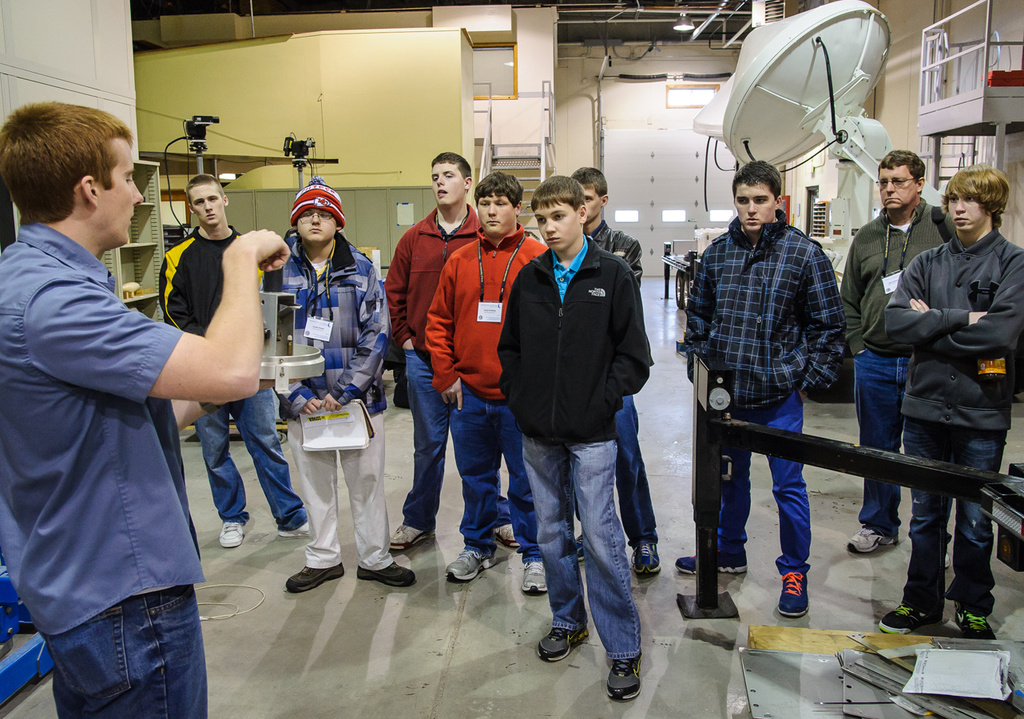
Ahmi Dhuna , a 10th grader at Burlington High School, is interested in the oral health benefits of chewing the meat of the Neem tree, a practice that has been going on in India and other African and Asian nations for two millennia and in her own family for generations.
Her research, titled “An In Vitro Comparison of the Antibacterial Effect of Azadirachta Indica and Triclosan on Common Oral Bacteria,” discovered that the tree did not have the same antibacterial benefits as a common toothpaste component. It also earned her top prize at the 2013 Iowa Regional Junior Science and Humanities Symposium (JSHS), which drew middle school and high school students from all over Iowa and took place in Iowa City Feb. 28 and March 1.
The event is hosted annually by the University of Iowa College of Education’s Connie Belin & Jacqueline N. Blank International Center for Gifted Education and Talent Development. Regional and national JSHS symposia are sponsored by the Academy of Applied Science, Inc., the U.S. Department of the Army, the Office of Naval Research, and the Air Force Office of Scientific Research. Winners of the regional event travel to Dayton, Ohio, this May to vie for a national prize.
In addition to Dhuna, students traveling to the national competition are Abby Walling from Iowa City West High School, Jay Wessels from Beckman Catholic High School in Dyersville, Wesley Weirather from Central Lee High School, and Camille Adajar, also from Central Lee High School.
All five finalists will receive a $750 freshman scholarship should they choose to attend the UI.
Dhuna will receive $2,000, Walling $1,500 and Wessels $1,000 from the Academy of Applied Science toward whatever university they choose to attend.
Dhuna says her study’s findings, in addition to taking her to the national competition, also inspire her to continue her research.
“This opens up a whole new world of clinical trials" to determine the plant’s true benefits in oral health, she says.
She says she plans to study dentistry, perhaps at the UI.
Teacher Alicia Schiller from Central Lee High School in Donnellson, Iowa, has brought students to the event nine times. She says she is thrilled for her students to network with other young researchers and spend time on campus.
“It gives them great insight into college and what the UI has to offer,” she says.
A highlight of this year’s event was the opportunity for students to tour working labs on the UI campus. Lab tours took place across disciplines ranging from gross anatomy, where students had a chance to touch real human organs, to a hydroscience and engineering lab, where students learned about water resources engineering.
Paolo Adajar, an 8th grader from Donnellson, toured a chemistry lab. When asked if it was as he expected it to be, a smile spreads across his face.
“It was better,” he says.
Jing Yao Li, a sophomore at West High School in Iowa City, toured a biology lab and says she enjoyed the opportunity to talk with a biologist about her work.
“I got to learn what her daily life was like,” Li says.
The Junior Science and Humanities Symposium program aims to widen the pool of trained talent prepared to conduct research and development vital to our nation. Susan Assouline, director of the Belin-Blank Center says the two-day event highlights the best of science, technology, engineering, and math, fields commonly referred to collectively as STEM, at the UI and the best of STEM in Iowa.
“Here we get to see the future of STEM,” she says.